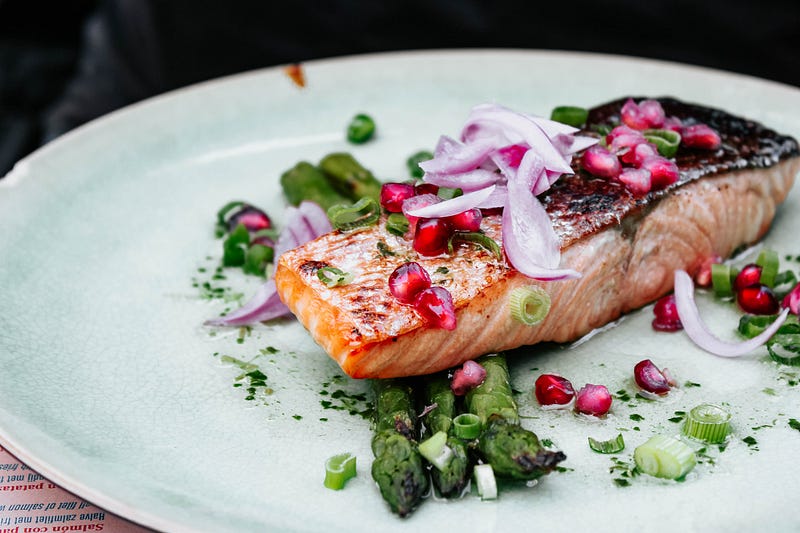
In principle, the ketogenic diet is a way of recalibrating the metabolism, whereby the body is forced to replace carbohydrates and carbohydrates with food and body fat as an energy source. Once the glucose sources are depleted, the liver converts both the fat in food and the body fat stores into ketones and fatty acids, which it uses as an energy source for the cells.
The Keto diet is an extremely effective way to lose weight quickly and effectively to eliminate body fat deposits without losing muscle mass as long as it is applied correctly.
In this article:
- What is the Keto diet, how the body induces ketosis?
- What are the types of foods you can eat on the ketogenic diet — keto recipes, menus, food supplements
- Food supplements
- The benefits of the keto diet
- The risks and disadvantages of the ketogenic diet
- What results can be achieved with the help of the keto diet
In this article, you will find all the information you need as a beginner on the ketogenic diet. Find out what are the main benefits of the diet but also what are the risks, which are the best keto dietary supplements, menus, recipes, possible results, allowed but also forbidden foods, as well as opinions and advice from nutrition specialists.
What is the Keto diet, how the body induces ketosis?
Trying the body to switch from glucose to fat is called induction of ketosis. The purpose of the ketogenic diet is to induce ketosis as quickly as possible and keep the body in this state for at least 4–6 weeks.
To induce ketosis, the body needs a drastic restriction of carbohydrate consumption, which means eliminating all carbohydrates and carbohydrate products from the daily diet. More details on allowed and prohibited foods shortly after.
At the time of glucose depletion, the liver compensates by burning fat and synthesizing ketone bodies which are used as an alternative source of energy for the body. The faster the state of ketosis is induced, the faster the body will start using the accumulated fat on the body, belly, hips, etc., to generate energy.
The fastest way you can get your body into a state of ketosis is the black pole. There are also keto dietary supplements, see Keto Guru effervescent tablets, which also have the ability to speed up this process a bit and help you overcome the symptoms and discomfort of carbohydrate hunger in the first few days.
Order KETO GURU directly from the manufacturer’s official website at a promotional price reduced by 50%. Click here for more details
It takes 24 hours to several days to deplete the glucose stores and go into ketosis. The easiest way to find out if you are in ketosis is by using a glucose meter which also measures ketone bodies in the blood. We recommend the CareSens Dual model, a reliable, high-quality glucose meter that measures glucose and ketone bodies and is compatible with KetoSens tests.
When it comes to carbohydrate restriction, the general rule is to reduce them to less than 30–50g per day. To do this it is necessary to know exactly the amount of carbohydrates contained in each food. You will need to create a daily menu to meet this requirement, otherwise, the body will not enter the state of ketosis.
What are the types of foods you can eat on the ketogenic diet — keto recipes, menus, food supplements

Compared to other types of diets, the ketogenic diet is not very restrictive in terms of the foods you can eat, the only exception being carbohydrates and carbohydrates. Below are two lists, one with the types of foods that are allowed and one with the types of foods that are prohibited on the standard keto diet.
Order KETO GURU directly from the manufacturer’s official website at a promotional price reduced by 50%. Click here for more details
Food allowed
In particular, the diet during the ketogenic diet should include foods that are high in fat, medium in protein, and very low in carbohydrates.
So, you are allowed to eat:
- chicken, beef, pork, lamb, fish, sheep
- eggs
- dairy
- hazelnuts
- almonds
- peanuts
- coconut oil, other vegetable oils
- other nuts and seeds
- butter
- fermented cream
- low-carb fruits and vegetables
- berries (for fiber content)
Forbidden food
When it comes to foods that are not allowed to eat, the ketogenic diet is very strict indeed. In the following list you will find all types of foods prohibited in this diet:
- salt and sugar
- any sugar preparation — juices, cakes, sweets, etc.
- flour products: pasta, bread, pastry
- cereals
- alcoholic beverages
- fruit, with a few small exceptions
- high-carbohydrate vegetables — potatoes, corn, beans
- sausages and other processed meat products
In terms of the daily ratio of fats, proteins, and carbohydrates, these should fall within the following values:
- 75–80% fat
- 15–20% protein
- 5% carbohydrates
As a number of calories, a minimum of 2000 calories for women and 2500 calories for men is recommended.
Food supplements
Keto dietary supplements can help you enter the state of ketosis more quickly while alleviating the discomfort created by this condition in the first few days. We recommend Keto Guru effervescent tablets which, as I said, accelerate the induction process of ketosis and facilitate the process of adapting to this physiological state of the body.
50% REDUCTION IN THE PRODUCER PRICE
You can also access the official website of the tablet manufacturer Keto Guru where you can order the supplement at a special price, much lower than in pharmacies in Italy.
The tablets have in their composition active components obtained from natural plant extracts. The supplement has no adverse effects and has no contraindications for use.
The benefits of the keto diet

With the help of the ketogenic diet, it is possible to eliminate the fat accumulated in the body and the layers deposited on the stomach, hips, buttocks, without compromising health and without losing muscle mass.
The main benefits of this diet are:
- lower “bad” cholesterol
- increasing the power of concentration
- reduced appetite
- increased physical energy
- a slightly sustainable diet which involves low financial costs
- reducing the risk of type 2 diabetes regulates the blood sugar level
- effective fat removal without affecting muscle mass
- reduce the risk of developing heart disease
- healthy weight loss method
Of course, like any other diet, the ketogenic diet has its advantages and disadvantages. In the list below you will find out what the main risks and disadvantages of this diet are.
The risks and disadvantages of the ketogenic diet
- elimination of very common foods that are usually in most people’s diets
- Low Fiber Consumption: Low fiber intake can be compensated for by consuming berries and seeds
- water consumption — in the context of the keto diet it is recommended, even mandatory, to consume at least 2 liters of water per day
- Acid-Base Balance: Since foods rich in fat and protein have an acidic pH, this imbalance must be compensated for by consuming low-carb vegetables, broccoli, spinach, etc.
What results can be achieved with the help of the keto diet
If you follow the guidelines on the ketogenic diet and don’t cheat, you can lower up to 1kg of fat per week. Additionally, this diet has many important long-term benefits.
Order KETO GURU directly from the manufacturer’s official website at a promotional price reduced by 50%. Click here for more details
As for the length of time, the body must be in the state of ketosis, according to doctors and nutritionists, it should be 4–6 weeks.

























0 comments:
Post a Comment